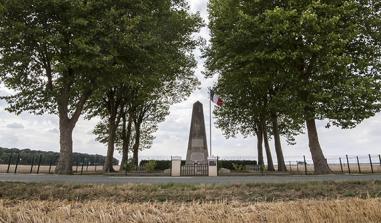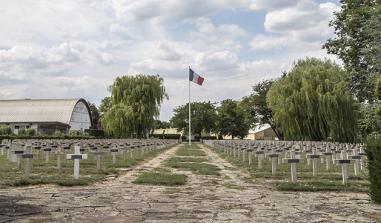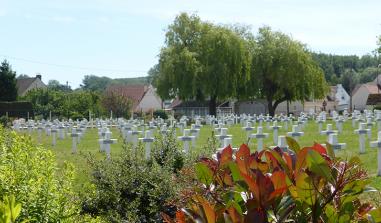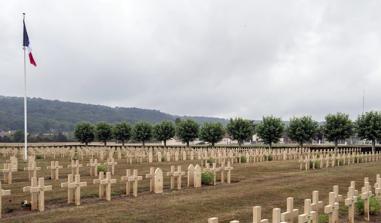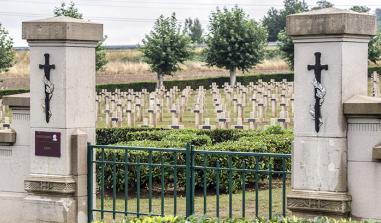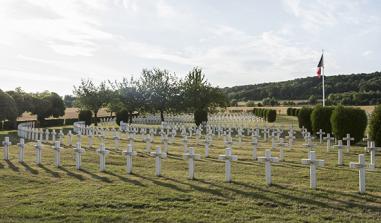Compiègne National Cemetery
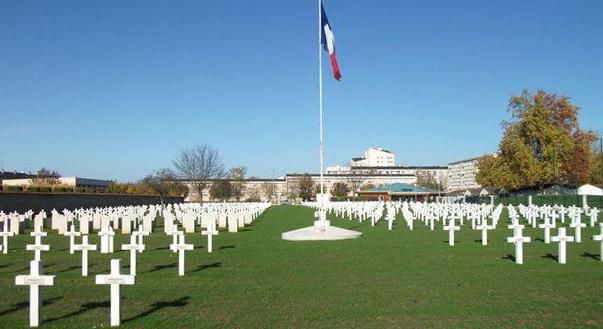
Compiègne-Royallieu National Cemetery. Source: MINDEF/SGA/DMPA/ONACVG
Click here to view the cemetery's information panel 
Compiègne-Royallieu National Cemetery holds the remains of soldiers who died for France after succumbing to their wounds in the town’s hospitals. Backing onto Compiègne South cemetery, this necropolis was established in 1921. It is located on the site of the former military cemetery attached to temporary military hospital No 16. In 1916, bodies exhumed from other cemeteries in the Oise were also brought to rest here. The cemetery holds nearly 3 400 bodies, including, from the First World War, 3 300 French (264 in two ossuaries), 81 British, 11 Russians, 1 Belgian and a German soldier buried in an ossuary, together with 4 Frenchmen killed during the Second World War.
The Battles of the Oise, 1914-18
In August 1914, as set out in the Schlieffen Plan, German troops entered Belgium and marched on Paris. They crossed the Oise and the Aisne before being stopped by the French counter-offensive on the Marne. The two armies then established a front from Verdun to Dunkirk; the right bank of the Oise was occupied by the Germans, while fierce fighting took place on the left bank, with the zouave regiments particularly distinguishing themselves.
For three years, from September 1914 to March 1917, the front didn’t budge. Noyon came under one of the strictest occupations, and the Oise saw no major military operations; it was a “quiet” sector. The French and German troops consolidated their positions, occupying underground quarries, which they decorated and carved.
At the end of 1916, the German command wanted to strengthen the front, and therefore decided to abandon the Noyon sector. Applying a scorched earth policy, the Germans retreated to the Hindenburg Line, which they had just established, thereby limiting the effects of an Allied offensive in this sector. By mid-March 1917, the area was liberated, but in ruins: the houses had been dynamited, the fields flooded, and the bridges and junctions destroyed.
However, the respite was short-lived. Less than a year later, 27 German divisions broke through the British front across 80 km and swept towards Noyon which, on 25 March 1918, found itself occupied once again. Entrenched on Mont Renaud, overlooking the town, the French drove back 23 German attacks, and for over a month shelled the enemy positions. Spared up until now, Noyon was completely destroyed.
On 9 June 1918, the German command ordered a fresh offensive. The Oise then became the scene of a bitter struggle, known as the Battle of Matz, during which the two enemy armies employed heavy artillery and tanks without reserve. Over the first few days, the German army made rapid progress. But due to major losses, their advance was halted at Compiègne. Led by General Mangin, the French army regained the initiative, liberating the Thiescourt massif and crossing the River Divette. On 30 August, Noyon was liberated for good.
The first department on the front line to come back under French control, the Oise has preserved the memory of that bitter fighting and, with the signing of the Armistice on 11 November 1918 in the forest of Rethondes, it remains one of the symbols of the Great War.
The town of Compiègne in the Great War
A town emblematic of First World War remembrance, where the Armistice was signed on 11 November 1918, from the early days of the war, soldiers of the British Expeditionary Force were stationed at Compiègne. Occupied temporarily by the Germans, the town was abandoned at the end of the Battle of the Marne. Located 12 km from the front, Compiègne became a vital link in the chain of medical attention provided to French Army casualties. A major hospital complex in the battle zone, it had many of its public buildings requisitioned, including Saint Joseph’s boarding school and the barracks of the 54th Infantry Regiment at Royallieu. The newly built barrack buildings could accommodate large numbers of wounded. Evacuated in June 1918, this medical complex was re-established and went on to function until the end of the war.
Threatened with enemy bombing from the air, in 1917 Compiègne became home to the French General Headquarters. In March 1918, due to the last major German offensives, the town came under threat once more and most of its population left. A strategic point on the route to Paris, the pressure from the enemy was entirely lifted from Compiègne in June 1918.
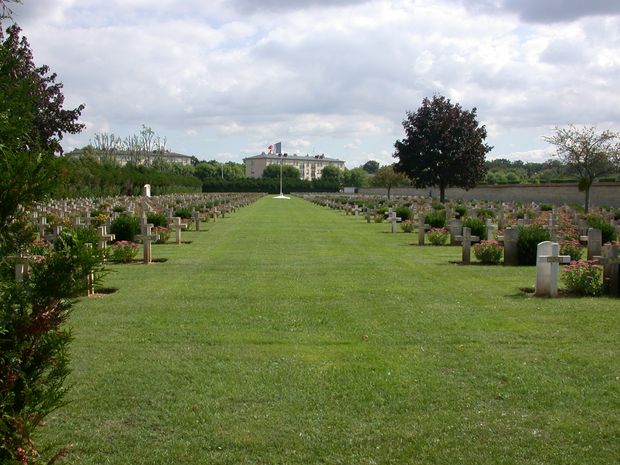
Compiègne-Royallieu National Cemetery. Source: MINDEF/SGA/DMPA/ONACVG
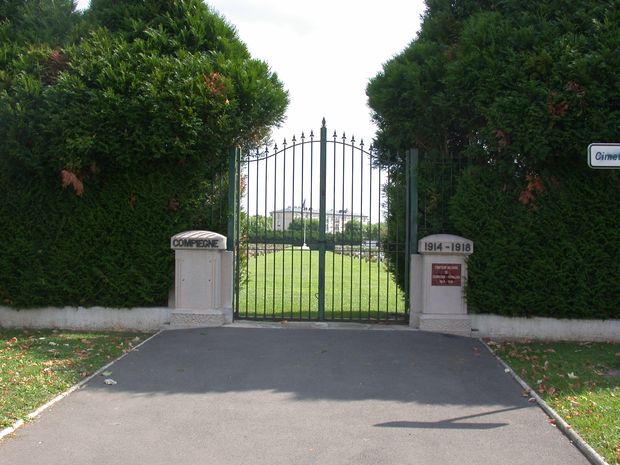
Compiègne-Royallieu National Cemetery. Source: MINDEF/SGA/DMPA/ONACVG
Compiègne-Royallieu National Cemetery. © Guillaume Pichard
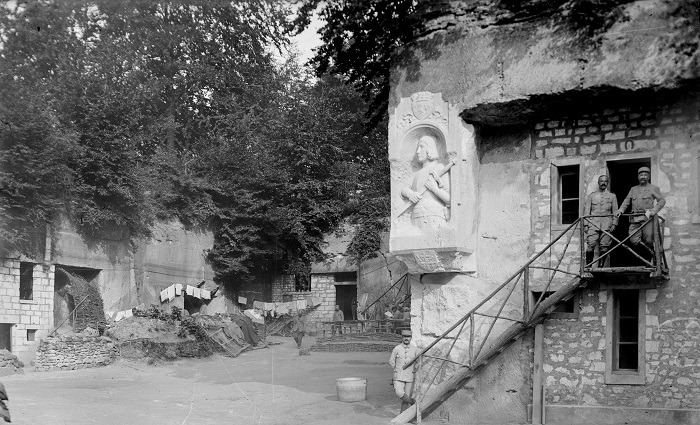
Entrance to the Chauffour quarry. © ECPAD
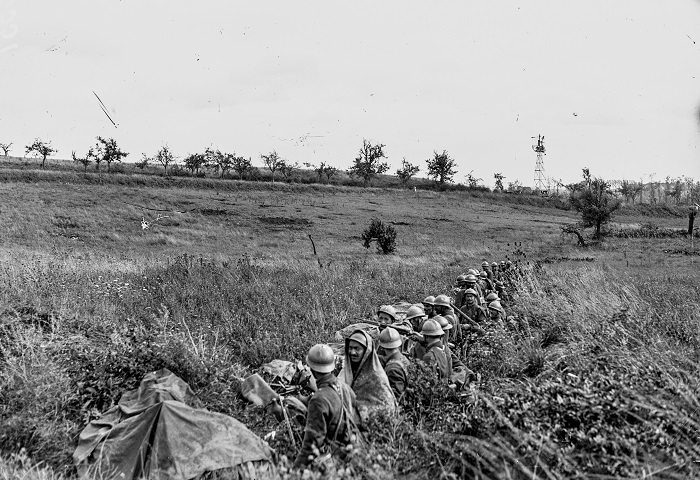
French soldiers in position before Mont Renaud, as it is about to be recaptured, Passel, 29 August 1918. © ECPAD
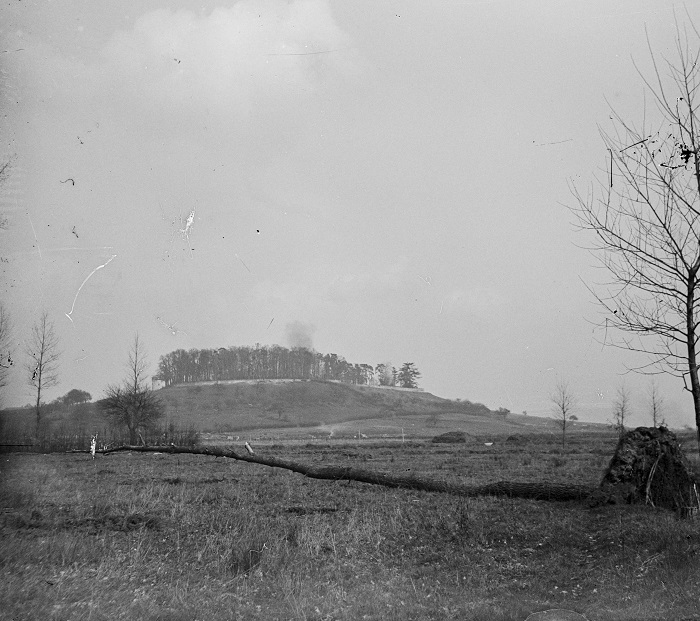
A shell explosion on Mont Renaud. © ECPAD
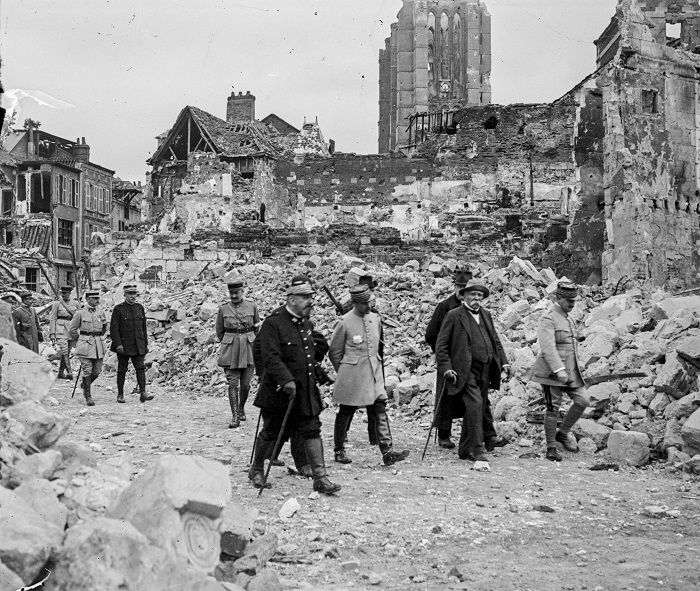
Official visit by Georges Clemenceau to the ruins of Compiègne. © ECPAD
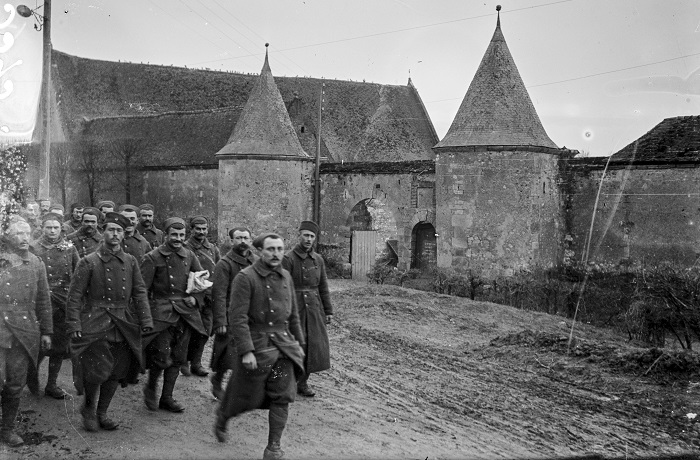
The Moroccan division stationed in the Froissy sector, in the Oise. © ECPAD
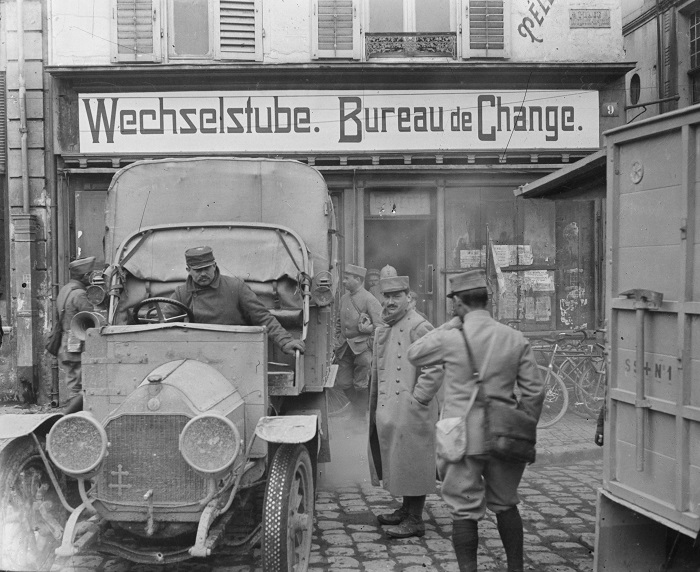
Entrance to a former bureau de change at Noyon, 20 March 1917. © ECPAD
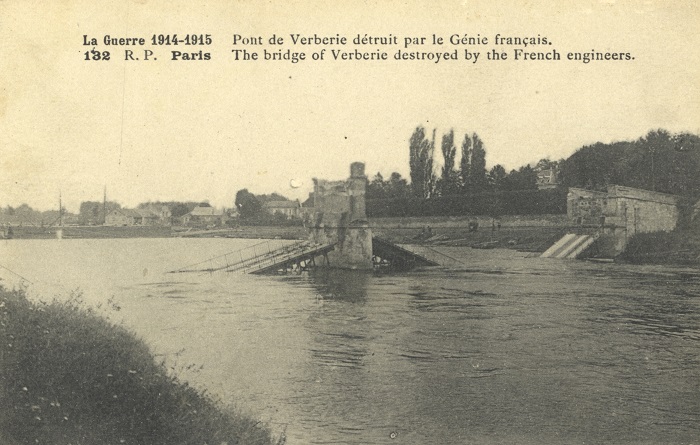
Destruction of a bridge over the Oise, Verberie, 1914. © Private collection / FBN / DR
Practical information
Compiègne
Read more
Related articles
Commemorative sites
- The Cambronne-lès-Ribécourt national cemetery
- The national necropolis of Dompierre-Becquincourt
- The national necropolis of Méry-la-Bataille
- Rémy National Military Cemetery
- Tracy-le-Mont National Military Cemetery
- Verberie National Cemetery
- The Vic-sur-Aisne National Cemetery
- Vignemont National Military Cemetery


